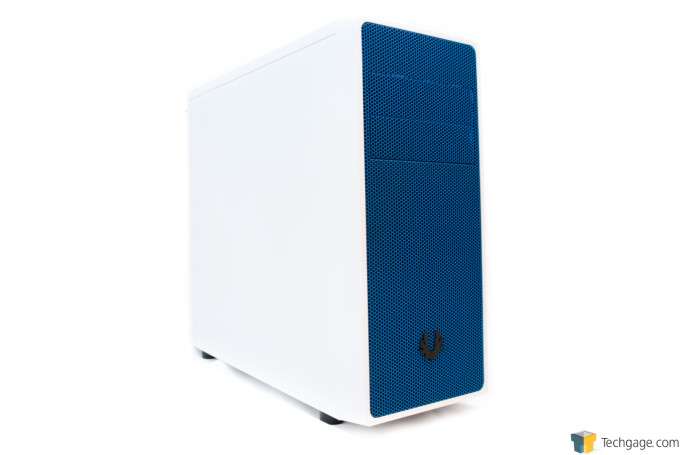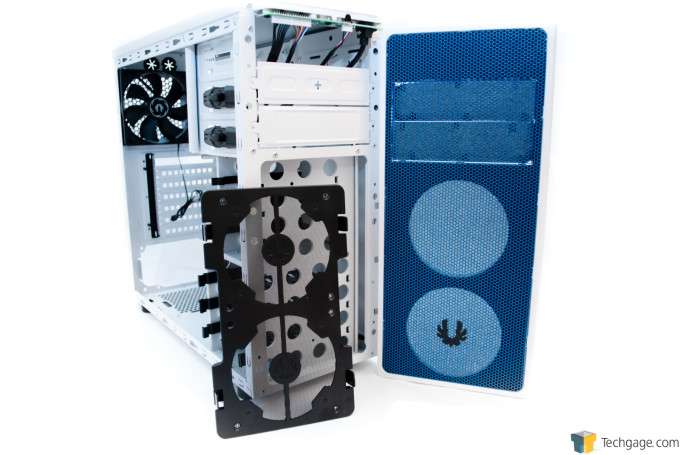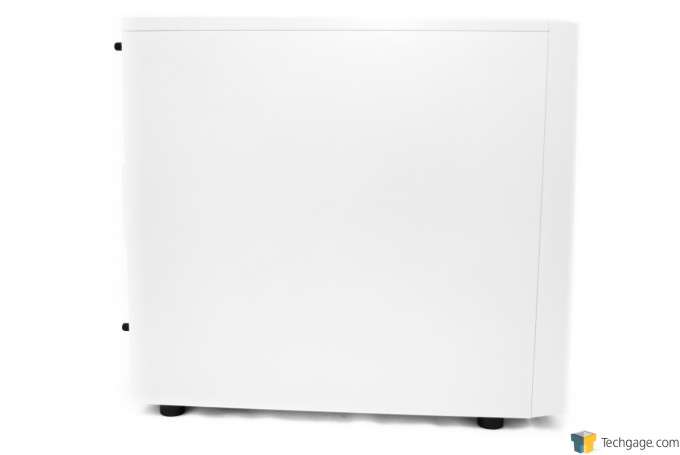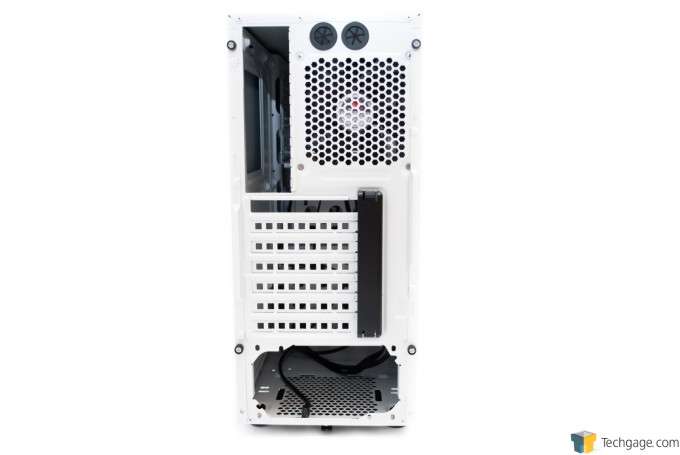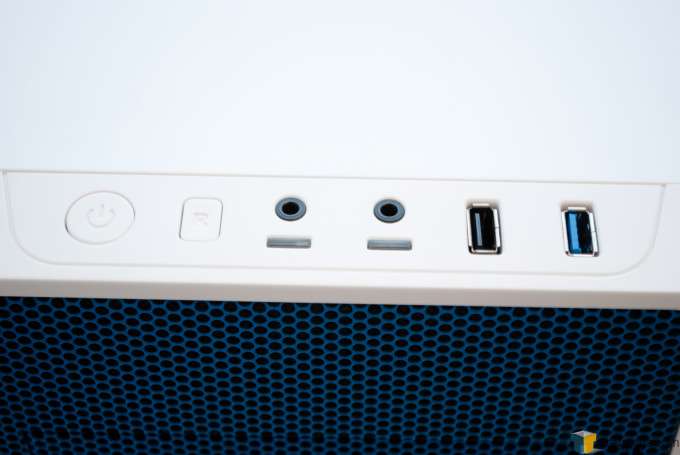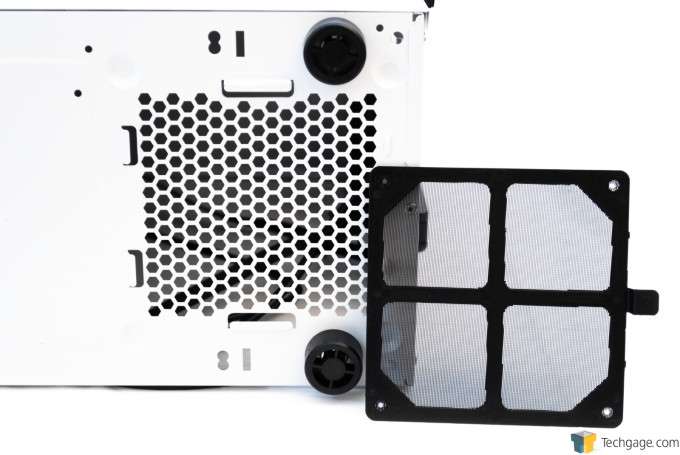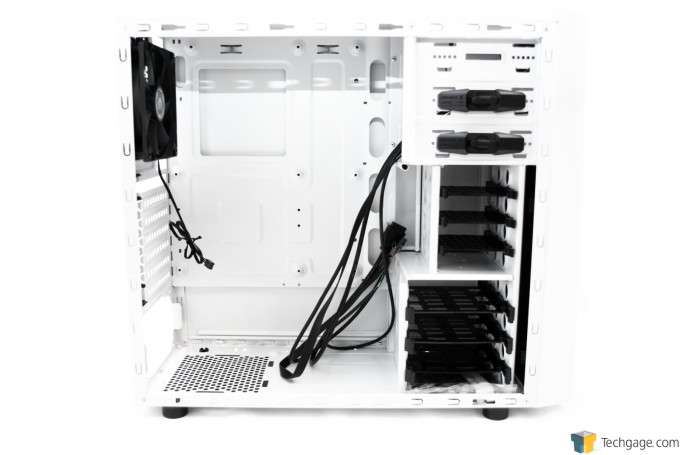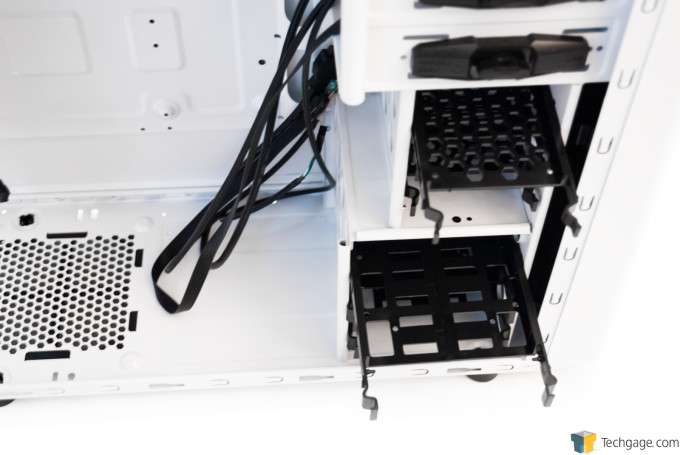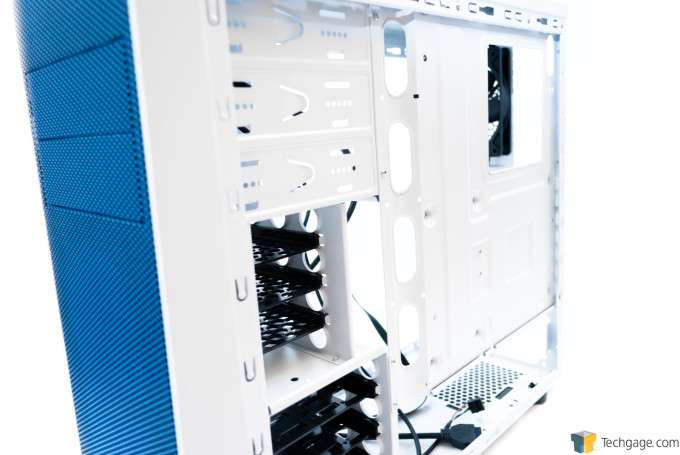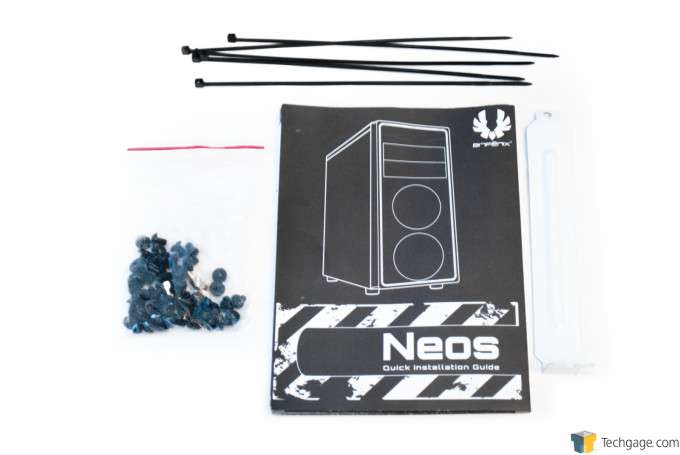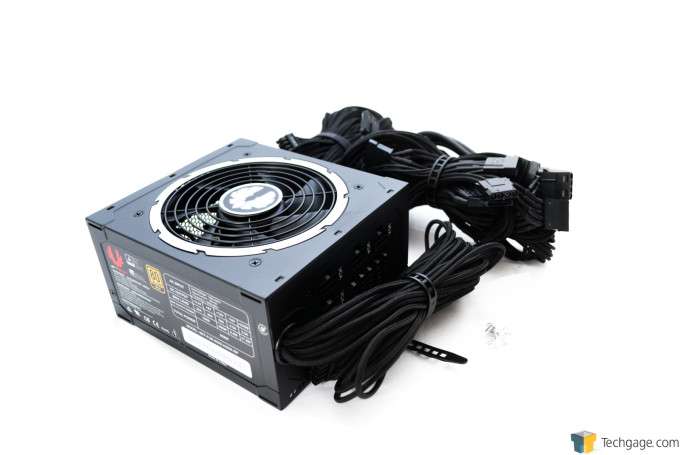- Qualcomm Launches Snapdragon 4 Gen 2 Mobile Platform
- AMD Launches Ryzen PRO 7000 Series Mobile & Desktop Platform
- Intel Launches Sleek Single-Slot Arc Pro A60 Workstation Graphics Card
- NVIDIA Announces Latest Ada Lovelace Additions: GeForce RTX 4060 Ti & RTX 4060
- Maxon Redshift With AMD Radeon GPU Rendering Support Now Available
A Fine Line Between ‘Inexpensive’ and ‘Cheap’: BitFenix Neos Review

BitFenix’s Neos mid-tower chassis sits at the lowest rung of the company’s chassis product line. As such, it comes in at a very affordable $59.99 – a price that allows anyone to get a piece of the action. But a low price doesn’t always deliver on the “value” aspects we’d hope to see, so let’s find out what kind of value the Neos is.
Page 1 – Introduction
Value. Now there’s a loaded word.
For some, it’s a bit of a dirty word, a euphemism for “cheap” and usually descriptive of something that occupies the lowest position of a company’s product line. By this definition, to say something is a great value is to denigrate it for its price.
For others, though, value is a beautiful concept. It means getting the most for one’s money. You don’t fork over a ton of money, but you get a lot for what you do surrender in terms of legal tender.
This brief discussion on the concept of value is relevant to the subject of our review today, the Neos from BitFenix. This chassis sits at the lowest rung of the company’s chassis line. Despite this, the Neos model offers a staggering plethora of color options. The basic chassis comes in either black or white, and this can be combined with a front fascia that comes in red, blue, black, silver, purple, gold (!), and white. That means there are fourteen possible color combinations to choose from, which, frankly, is astonishing considering this chassis’ place at the bottom of the batting order. The company sent Techgage a white and blue Neos to review, as well as a 650W Fury power supply unit for our use in this review. Many thanks to BitFenix.
Let’s get on with getting to know the BitFenix Neos.
There it is, resplendent in white and blue. It’s a cool color combination, very easy on the eyes. The front view is dominated by the all-mesh fascia. This specific color scheme and the perforations suggest that this chassis should be able to keep your PC cool quite easily, no?
Removing the front panel reveals the mesh is backed by a foam filter which should do a good job keeping the dust out. Further aiding dust filtration is a clip-on dust filter. This dust filter is actually quite cleverly designed, since this is where users would install up to two 120mm fans. Normally, fans are installed onto the chassis itself; this is an interesting innovation on the Neos.
Here’s a view of the left side panel. It’s virtually identical to the right side panel. BitFenix does have a Neos model fitted with a windowed left side panel (it’s a separate SKU).
The rear view is fairly typical. Most noteworthy are the seven PCI expansion slots as well as the thumbscrews securing the side panels. The rear exhaust fan is a 120mm BitFenix fan, by the way. That black piece perpendicular to the PCI expansion slot area is a removable plastic panel that gives you access to the screw holes used to anchor graphics cards and other PCI expansion devices.
Since there’s nothing particularly interesting on the right side of the case, let’s move on to the front I/O cluster. It sits on the top front edge of the Neos. The I/O cluster is fairly unique in that this is the first one that I’ve seen that has one port each of USB 3.0 and 2.0; more usual, in my experience, is a pair of either or both USB types.
Turning it to its side, we can have a look at the Neos’ bottom. The chassis has four plastic feet at the corners. There is also a filtered opening to feed your system’s power supply unit at the rear. The filter is removable for easy cleaning.
Next stop on our visual tour of the Neos is a look at its interior. The whole interior is painted in the same color as the rest of the chassis. Note that black sleeving on the cables from the I/O cluster, the four oval-shaped cable management holes, as well as the 100% tool-less optical drive bay retention system. Although it’s not clear from this angle, where the standoffs would usually be on the motherboard tray, are raised blisters with screw holes in their centers. These blisters are, effectively, the standoffs. The Neos supports mini-ITX, mATX, and ATX motherboards.
The Neos has two distinct drive cages, one each for 2.5″ and 3.5″ storage devices. SSDs and HDDs are secured onto plastic sleds with screws (which are provided); the sleds then slide into their own appropriately sized drive cages. These drive cages can each hold up to three drives; they are not removable from the chassis.
Next is a look at the rear of the motherboard tray. As this shot shows, there just isn’t much room between the rear of the motherboard tray and the right side panel; the gap is just barely half a centimeter, actually. Whether this will make neat cable management difficult (or impossible) we will see later on in the review.
Here’s a look at the accessory package included in the Neos. We have a single baggie of assorted screws, a few zip-ties, and a quick installation guide.
Before we move on with this review, here’s a look at the Fury 650G PSU that BitFenix so generously provided to us. The Fury 650G is a 80 Plus Gold-rated power supply unit, capable of producing a peak of 650W. Its feature list is extensive: Active Power Factor Correction; Nanosleeve braided cables; semi-modular cabling; Japanese-made capacitors; single 12V rail output (capable of 50A from 0-40°C); Intel Haswell C6/C7 Power State compatibility; and OVP, UVP, OCP, SCP, OTP, and OPP protections. BitFenix specifies a warranty of five years.
Now that we’ve had a look at both the Neos and the Fury 650G, let’s install our test system.
Support our efforts! With ad revenue at an all-time low for written websites, we're relying more than ever on reader support to help us continue putting so much effort into this type of content. You can support us by becoming a Patron, or by using our Amazon shopping affiliate links listed through our articles. Thanks for your support!




